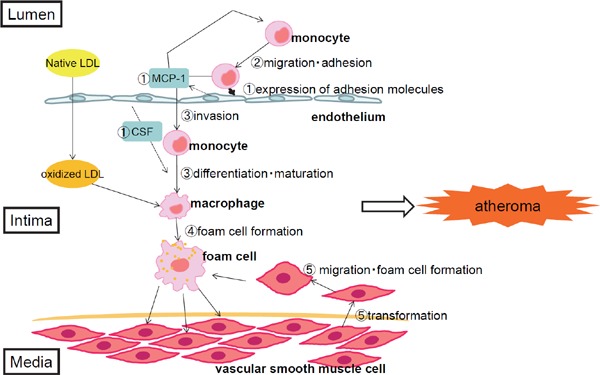Fig. 1.

Process of the formation of atherosclerotic lesions.
(1) Vascular endothelial cells injured by oxidative stress or other factors express adhesion molecules and release cytokines and chemokines. (2) The chemokines attract monocytes from blood circulation to the injured area, and monocytes attach to the endothelium through interaction with adhesion molecules. (3) Monocytes penetrate the subendothelial space, differentiate, and mature into macrophages that release cytokines. When LDL cholesterol levels are high, LDL cholesterol infiltrates the subendothelial space and is retained in the intima where it is oxidized or otherwise modified. (4) Macrophages take up and accumulate oxidized LDL cholesterol, leading to foam cell formation and atherogenesis. (5) Oxidized lipids trigger the secretion of various growth factors by the endothelium. Vascular smooth muscle cells of the media transform and migrate into the intima where they proliferate and actively produce extracellular matrix. These transformed vascular smooth muscle cells also take up oxidized LDL cholesterol and transform to form cells that contribute to atherogenesis. (6) On the other hand, the proliferation of vascular smooth muscle cells and an increase in extracellular matrix may cause intimal thickening and sclerosis.
Abbreviations: LDL, low-density lipoprotein; MCP-1, Monocyte chemoattractant protein-1; CSF, colony stimulating factor.
